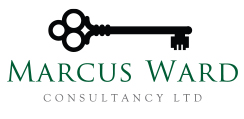VAT Basics
Exemption generally
Some services are exempt from VAT. If all the services a business provides are exempt, it will not be able to register for VAT, which means it cannot reclaim any input tax incurred on its purchases or expenses.
If a business is VAT registered it may make both taxable and exempt supplies (it will need to make at least some taxable supplies to be registered). Such a business is classed as partly exempt and it may be able to recover some input tax, but usually not all (Please see de minimis below).
Types of supply which may be exempt
Examples are:
- Betting, gaming, dutiable machine games and lotteries
- Burial and cremation
- Cultural services
- Museums, galleries and zoos
- Live performances
- Education
- Education
- Vocational training
- Examination services
- Individual tuition
- Finance
- The issue, transfer or receipt of money, or any security for money
- Granting credit
- intermediary services
- Dealing in shares, stocks, bonds, notes debentures and similar
- Dealings in currency
- Banking
- Management of some investments
- Fund raising events by charities and other qualifying bodies
- Health and welfare
- Medical care
- Dentistry
- Pharmacy services
- Opticians
- Welfare services
- Insurance
- Generally; insurance and reinsurance transactions and intermediary services
- Investment gold
- Land*
- Generally; selling or letting land or property
- Postal services
- Sport, sports competitions and physical education
- Competition entries
- Sporting facilities
The above list is not exhaustive.
* Most businesses which do not routinely make exempt supplies usually encounter exemption in the area of land and property and it is an easy trap to fall into not to consider VAT when involved in property transactions. This is one area where VAT planning may be of assistance as it is possible in most situations to deliberately choose to add VAT to an exempt supply to avoid a loss of input tax. This is known as the option to tax, and it is considered in more detail here.
The legislation covering exemption is found at The VAT Act 1994, Schedule 9.
What does exemption mean?
An entity only making exempt supplies cannot register for VAT and consequently has no VAT responsibilities or obligations. While this may seem attractive, exemption is often a burden rather than a relief. This is because any VAT it incurs on any expenditure is irrecoverable and represents an additional cost. This often affects charities, although there are some limited reliefs.
Exempt supplies are completely different to non-business activities, although the VAT outcome is often similar.
Partial exemption de-minimis
A partly exempt business cannot usually recover all of the input tax it incurs. However, there is a relief called de minimis. Broadly, if VAT bearing expenditure is below certain limits in may be recovered in full. These are provisional calculations and are subject to a Partial Exemption Annual Adjustment.
Further information on terms used in partial exemption here.
